Bird chiles, also known as bird's eye chiles, are small, intensely hot peppers used globally in cuisines like Thai, Mexican, and African cooking. Typically ranging from 50,000 to 225,000 Scoville Heat Units (SHU), they are significantly hotter than jalapeños and commonly featured in dishes where heat is the primary flavor component.
| Chile Variety | Scoville Heat Units (SHU) |
|---|---|
| Mexican Arbol | 15,000–30,000 |
| Thai Prik Kee Noo | 50,000–100,000 |
| African Birdseye | 100,000–225,000 |
| Indonesian Cabe Rawit | 100,000–200,000 |
Unlike jalapeños (2,500–8,000 SHU), bird chiles deliver concentrated heat from their small size, making them essential for authentic regional dishes. These peppers originated in Central and South America but are now cultivated worldwide, particularly in Southeast Asia and Africa.
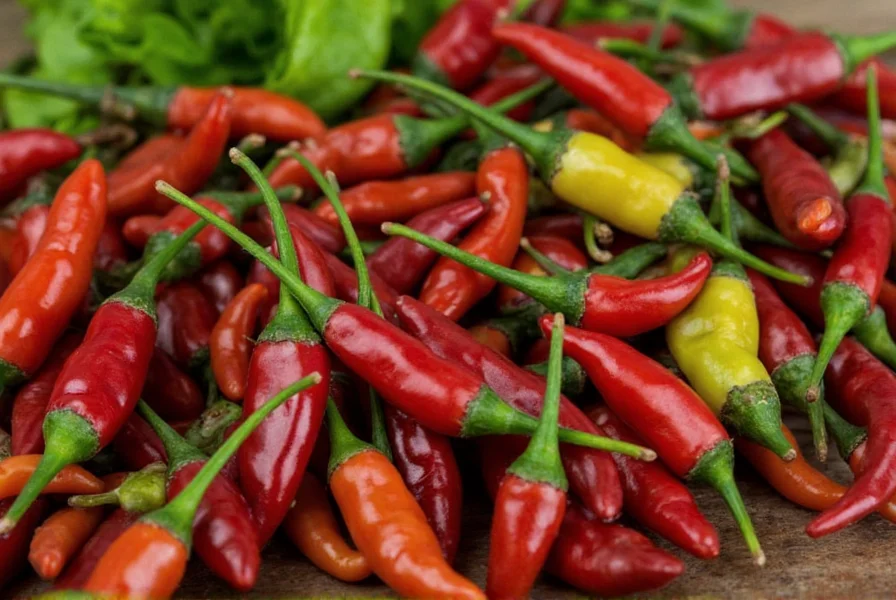
What Are Bird Chiles?
Bird chiles (Capsicum annuum or Capsicum frutescens) are small, slender peppers typically 1-2 inches long with a tapered shape. The name comes from birds' ability to eat them without feeling heat, aiding seed dispersal. They're prized for their intense heat and complex flavors ranging from fruity to smoky.
Bird Chiles Heat Levels: Scoville Scale Explained
Heat intensity varies significantly by variety. Here's a precise comparison of common bird chile types:
| Variety | Origin | Scoville Heat Units (SHU) | Flavor Profile |
|---|---|---|---|
| Mexican Arbol | Mexico | 15,000–30,000 | Nutty, smoky, bright |
| Thai Prik Kee Noo | Thailand | 50,000–100,000 | Sharp, grassy, floral |
| African Birdseye | South Africa | 100,000–225,000 | Earthy, citrusy |
| Indonesian Cabe Rawit | Indonesia | 100,000–200,000 | Spicy, tangy, aromatic |
For reference: Jalapeños range 2,500–8,000 SHU, while pure capsaicin is 16,000,000 SHU. Thai bird chiles often exceed habanero heat levels (100,000–350,000 SHU).
Global Culinary Uses of Bird Chiles
These peppers are indispensable in regional cuisines worldwide:
- Thai cuisine: Essential in green curry paste, pad kra pao, and som tam (papaya salad)
- Mexican cuisine: Used in salsas (salsa de arbol), adobo marinades, and mole sauces
- African cuisine: Key ingredient in peri-peri sauces, stews, and chili oils
- Indonesian cuisine: Found in sambal oelek, nasi goreng, and satay sauces
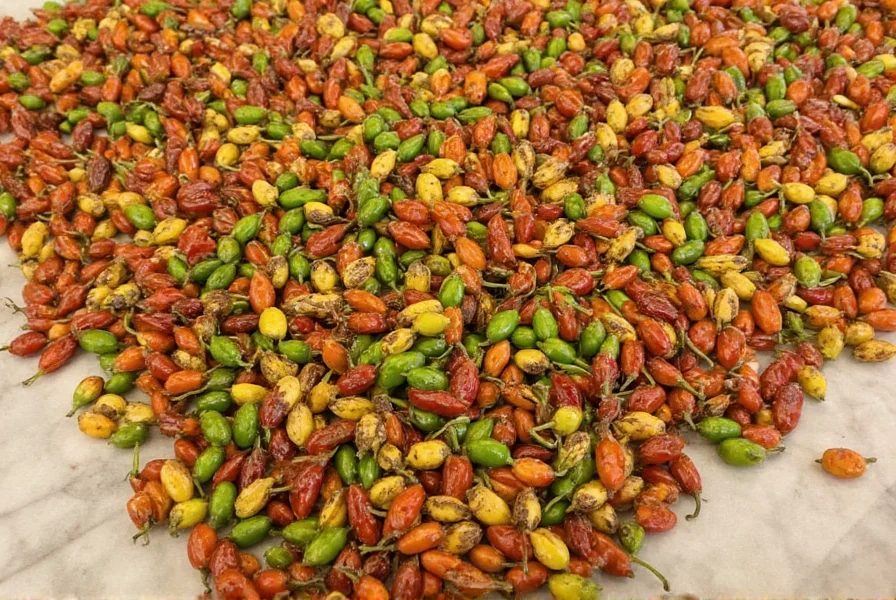
How to Buy Bird Chiles: Fresh vs Dried
Fresh Bird Chiles
- Appearance: Vibrant color (red, green, or orange), firm skin without wrinkles or soft spots
- Smell: Fresh, slightly earthy aroma—avoid musty or off smells
- Best For: Salsas, quick-cooked dishes, and oil infusions
Dried Bird Chiles
- Appearance: Uniform color with no mold or insect damage
- Texture: Crisp when broken—avoid brittle or overly soft pieces
- Best For: Curries, soups, and long-simmered dishes
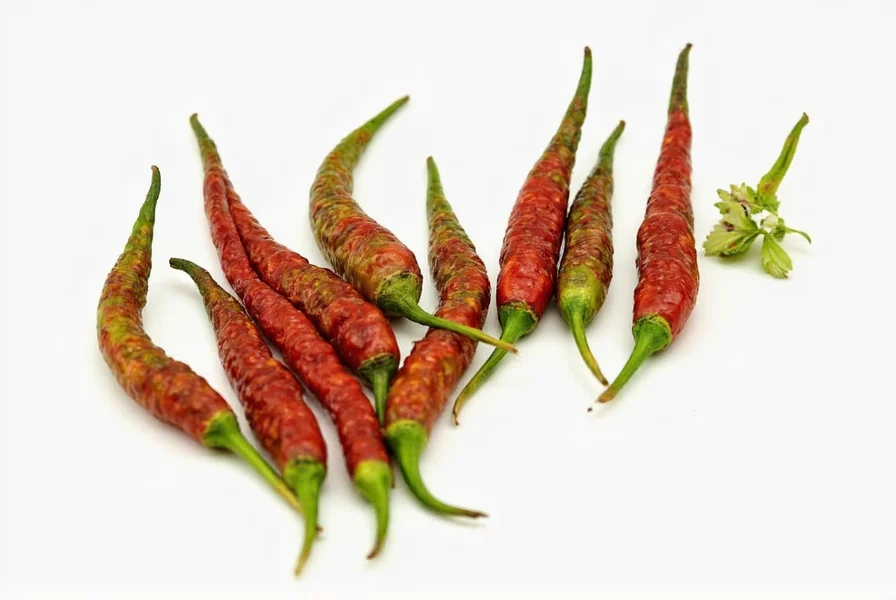
Optimal Bird Chiles Storage Methods
- Fresh chiles: Store in paper bag inside fridge crisper drawer for 10-14 days
- Dried chiles: Keep in airtight container in cool, dark place for up to 1 year
- Freezing: Wash, dry, and freeze whole in ziplock bags—use without thawing
- Oil infusion: Store infused oils in refrigerator for up to 2 months
Pro Cooking Techniques for Bird Chiles
- Seed removal: Capsaicin concentrates in seeds and white membranes—remove for milder heat
- Dry toasting: Toast dried chiles in pan until fragrant to enhance flavor complexity
- Acid pairing: Balance heat with lime juice, vinegar, or tamarind
- Infused oils: Create versatile chili oils by simmering dried chiles in olive oil
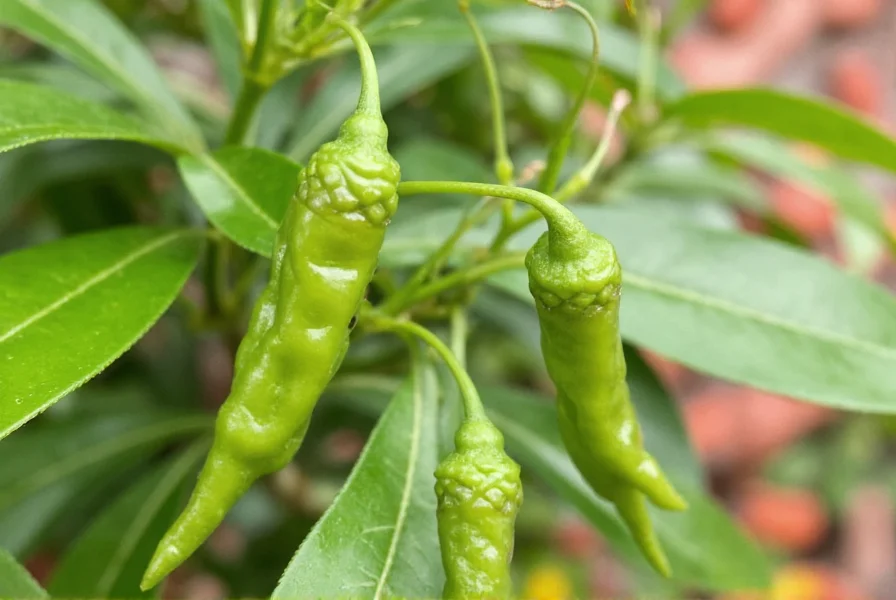
Essential Safety Handling Tips
- Wear gloves: Always when handling fresh or dried chiles
- Never touch face: Capsaicin causes severe eye and skin irritation
- Immediate relief: Rinse with cold water, then apply milk or yogurt to affected areas
Frequently Asked Questions
Are bird chiles and birdseye chiles the same thing?
Yes. "Bird chile" is the general term, while "birdseye" typically refers to African or Thai varieties. All bird chiles are small, hot peppers used globally.
What's the best substitute for bird chiles?
For similar heat: Thai chiles or cayenne pepper. For milder heat: serrano peppers. For extreme heat: habaneros (use sparingly). Always adjust quantities based on desired spice level.
Do bird chiles lose heat when cooked?
No. Capsaicin is heat-stable and oil-soluble. Cooking distributes heat evenly but doesn't reduce intensity. Prolonged cooking may deepen flavor complexity while maintaining original heat levels.
How should I store bird chiles for maximum freshness?
Fresh: Paper bag in fridge crisper (10-14 days). Dried: Airtight container in cool, dark place (up to 1 year). Freezing: Wash, dry, freeze whole (no thawing needed). Infused oils: Refrigerate for up to 2 months.
What are the 5 key facts about bird chiles?
1) Heat concentrates in seeds and membranes—remove for milder flavor
2) Birds eat them without feeling heat, spreading seeds naturally
3) Thai varieties (50k-100k SHU) often exceed habanero heat
4) Used globally from Thai curries to Mexican salsas and African stews
5) Proper storage (cool, dark, dry) preserves potency for months
Conclusion: Master Bird Chiles in Your Kitchen
Bird chiles deliver intense heat and complex flavors that elevate dishes worldwide. By understanding their heat profiles, proper storage, and cooking techniques, you can confidently incorporate these versatile peppers into your culinary repertoire. Start with small amounts and gradually increase to find your perfect spice level—your taste buds will thank you!
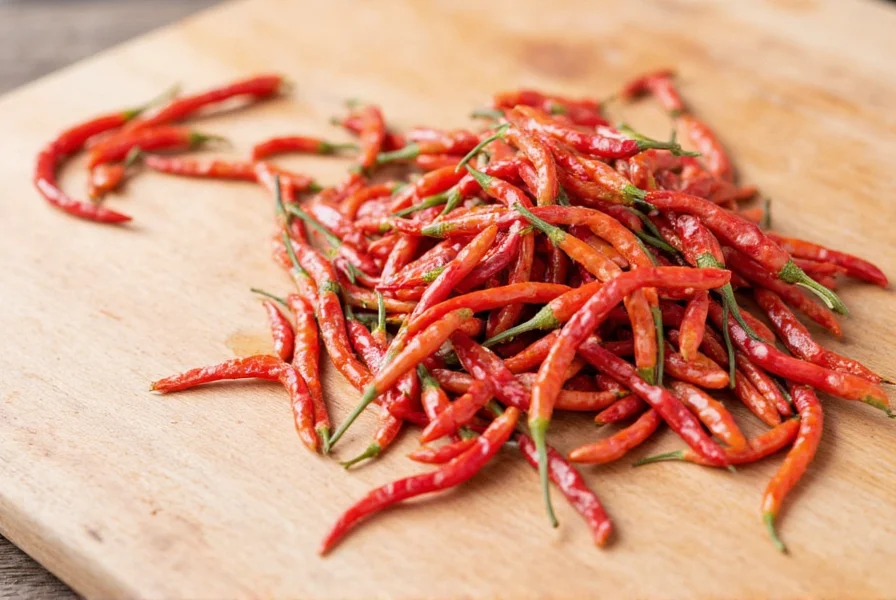











 浙公网安备
33010002000092号
浙公网安备
33010002000092号 浙B2-20120091-4
浙B2-20120091-4